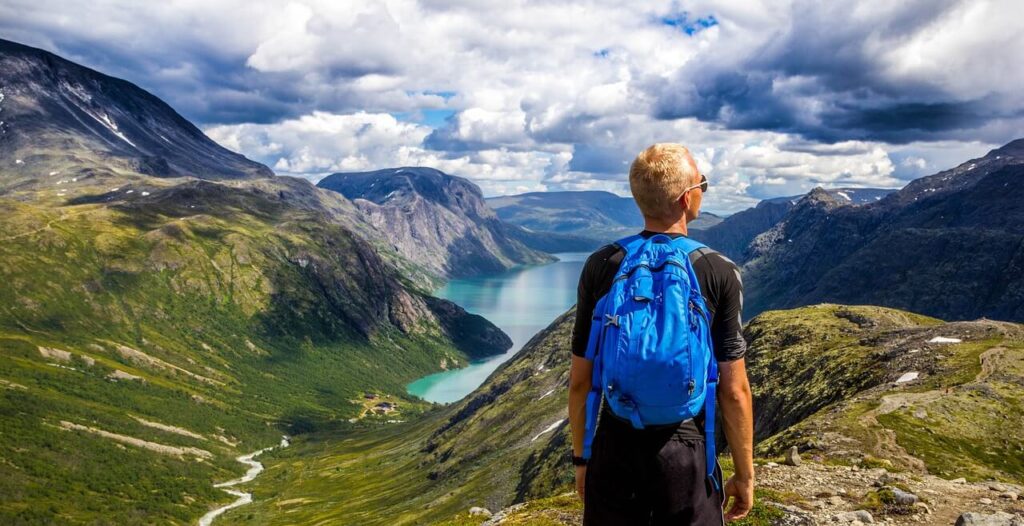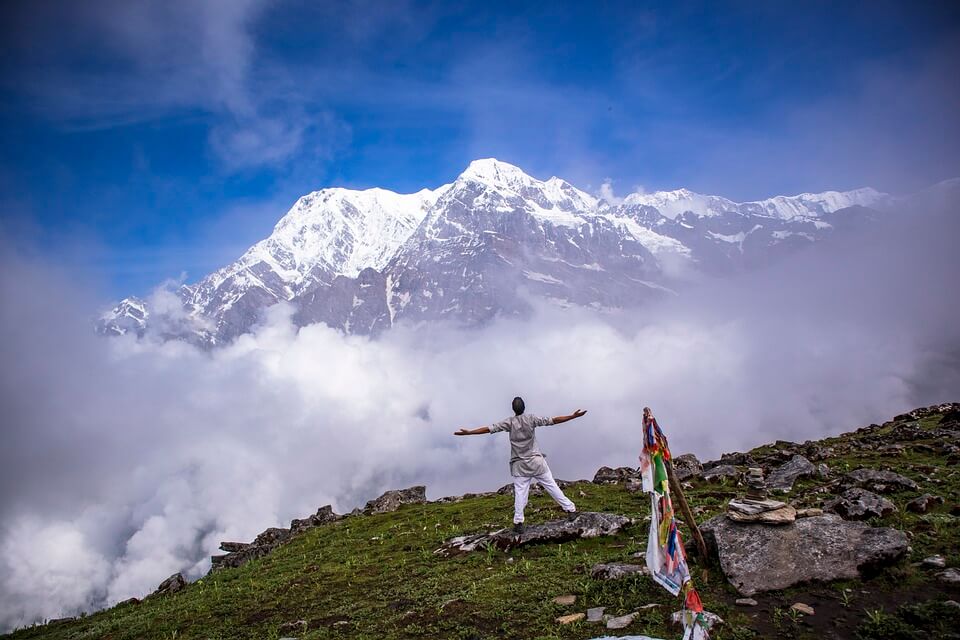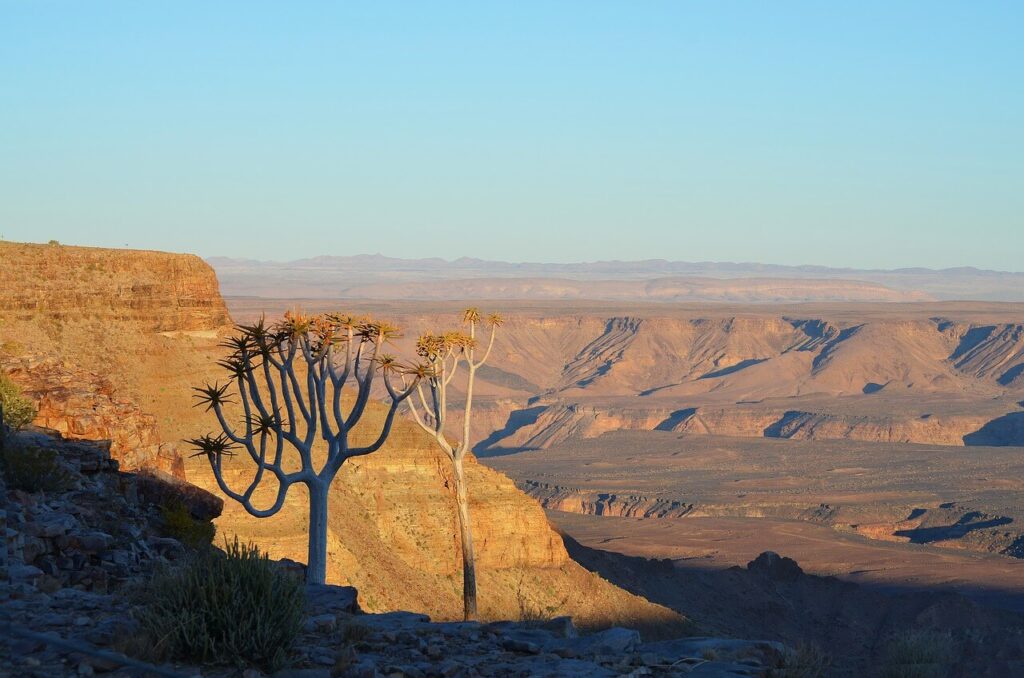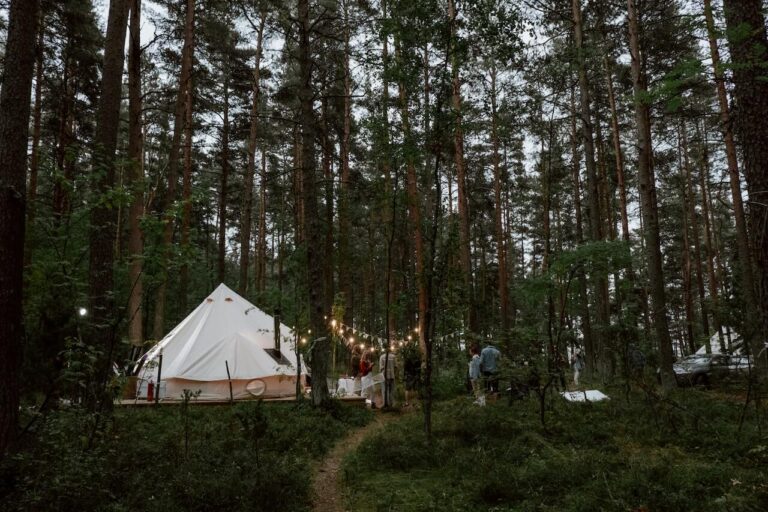
Introduction
Hiking is a popular outdoor activity that allows people to connect with nature and explore their surroundings while also providing numerous health benefits. However, for some adventurers, hiking on well-known trails or crowded areas isn’t enough. These people seek out the most remote hiking trails in the world for a unique and unparalleled experience.
Isolated hiking trails are those that are located in remote or off-the-grid areas, far away from civilization, and often require special preparations and skills to navigate. These trails are typically not well-known or frequently visited and can range from rugged, difficult terrain to serene, peaceful paths.
Why people seek out remote hiking experiences:
People seek out remote hiking experiences for various reasons, including a desire for adventure, a need to disconnect from the hustle and bustle of daily life, and a thirst for exploring uncharted territories. Remote hiking also offers a chance to challenge oneself physically and mentally, discover hidden gems, and connect with nature in a way that is not possible on well-known trails.
Moreover, the lack of crowds on remote hiking trails allows hikers to experience a sense of solitude, peace, and tranquility that can be hard to find in our increasingly busy and connected world. Hiking in isolated areas also offers a unique opportunity to see wildlife, observe rare plants and geological formations, and immerse oneself in different cultures and ways of life.

Top isolated hiking trails in North America
North America is home to some of the most breathtaking and isolated hiking trails in the world. From the rugged mountains of Alaska to the deserts of the American Southwest, these trails offer hikers a chance to experience untouched wilderness and breathtaking landscapes. Here are some of the top isolated hiking trails in North America:
- The Kalalau Trail, Hawaii: This trail is located on the Na Pali Coast of Kauai and offers hikers a chance to experience stunning ocean views, lush green valleys, and remote beaches. The trail is 11 miles long and can be quite challenging, with steep climbs and narrow paths. The best time to hike the Kalalau Trail is during the dry season, from May to September.
- The Chilkoot Trail, Alaska: This historic trail was used by gold rush miners in the late 1800s and takes hikers through some of the most rugged and isolated terrains in Alaska. The trail is 33 miles long and takes hikers through mountains, glaciers, and dense forests. The best time to hike the Chilkoot Trail is from June to September.
- The Wonderland Trail, Washington: This trail circles around Mount Rainier and offers hikers spectacular views of glaciers, alpine meadows, and old-growth forests. The trail is 93 miles long and is considered to be quite challenging due to its steep climbs and unpredictable weather. The best time to hike the Wonderland Trail is from July to September.
- The Wind River Range, Wyoming: This area is known for its remote and rugged wilderness and offers hikers a chance to experience some of the most stunning mountain landscapes in North America. The Wind River Range has several hiking trails, ranging from easy day hikes to multi-day backpacking trips. The best time to hike in the Wind River Range is from July to September.
- The Arctic Circle Trail, Greenland: This trail takes hikers through the remote and pristine wilderness of Greenland’s Arctic Circle. The trail is 100 miles long and takes hikers through tundra, mountains, and glacial valleys. The best time to hike the Arctic Circle Trail is from June to September.
These are just a few of the many isolated hiking trails that North America has to offer. When planning a hike on one of these trails, it is important to research the difficulty level, length, and recommended time of year to hike. It is also essential to prepare properly for the trail, including packing appropriate gear and supplies and informing others of your plans. With proper preparation and a sense of adventure, hiking on these remote trails can be an unforgettable experience.

Top isolated hiking trails in South America
South America is home to some of the most stunning and isolated hiking trails in the world. From the Andes mountains to the lush rainforests of the Amazon, these trails offer hikers a chance to experience some of the most remote and untouched areas of the continent. Here are some of the top isolated hiking trails in South America:
- The Inca Trail, Peru: This iconic trail takes hikers through the Andes mountains and culminates at the ancient Incan ruins of Machu Picchu. The trail is 26 miles long and is considered to be moderately difficult, with steep climbs and narrow paths. The best time to hike the Inca Trail is from May to September.
- The Santa Cruz Trek, Peru: This trek takes hikers through the stunning Cordillera Blanca mountain range in Peru. The trail is 31 miles long and takes hikers through high-altitude passes, alpine lakes, and valleys. The best time to hike the Santa Cruz Trek is from June to September.
- The W Trek, Chile: This trail takes hikers through the rugged wilderness of Torres del Paine National Park in Chile. The trail is 43 miles long and offers stunning views of glaciers, lakes, and the iconic Torres del Paine peaks. The best time to hike the W Trek is from November to March.
- The Lost City Trek, Colombia: This trail takes hikers through the lush jungle of the Sierra Nevada mountains in Colombia and culminates at the ancient Lost City ruins. The trail is 27 miles long and is considered to be moderately difficult, with steep climbs and rugged terrain. The best time to hike the Lost City Trek is from December to March.
- The Quilotoa Loop, Ecuador: This trail takes hikers through the remote Andean villages and stunning landscapes of Ecuador. The trail is 21 miles long and takes hikers around the Quilotoa crater lake, offering breathtaking views of the surrounding mountains and valleys. The best time to hike the Quilotoa Loop is from June to September.

Top isolated hiking trails in Europe
Europe may be known for its bustling cities and historical landmarks, but it is also home to some of the most breathtaking and isolated hiking trails in the world. From the rugged coastlines of Ireland to the towering peaks of the Swiss Alps, Europe offers a diverse range of hiking experiences. Here are some of the top isolated hiking trails in Europe:
- The West Highland Way, Scotland: This trail takes hikers through the stunning Scottish Highlands, offering views of mountains, lochs, and forests. The trail is 96 miles long and is considered to be moderately difficult, with some steep climbs and rugged terrain. The best time to hike the West Highland Way is from May to September.
- The Camino de Santiago, Spain: This famous pilgrimage trail takes hikers through the scenic countryside of northern Spain, culminating at the Santiago de Compostela Cathedral. The trail is over 500 miles long and is considered to be moderately difficult, with some challenging climbs and long distances. The best time to hike the Camino de Santiago is from May to October.
- The Haute Route, Switzerland/France: This trail takes hikers through the stunning Swiss Alps and offers views of snow-capped peaks and glaciers. The trail is 120 miles long and is considered to be challenging, with high-altitude climbs and technical terrain. The best time to hike the Haute Route is from July to September.
- The Laugavegur Trail, Iceland: This trail takes hikers through the rugged wilderness of Iceland, offering views of volcanic landscapes, glaciers, and hot springs. The trail is 34 miles long and is considered to be moderately difficult, with some steep climbs and river crossings. The best time to hike the Laugavegur Trail is from June to September.
- The Kerry Way, Ireland: This trail takes hikers through the stunning coastline and mountains of southwestern Ireland, offering views of lakes, waterfalls, and rugged cliffs. The trail is 132 miles long and is considered to be moderately difficult, with some steep climbs and rugged terrain. The best time to hike the Kerry Way is from May to September.

Top isolated hiking trails in Asia
Asia is a vast continent with a diverse range of landscapes and terrains, offering some of the most isolated and challenging hiking trails in the world. From the rugged mountains of the Himalayas to the dense jungles of Southeast Asia, there are numerous hiking trails that offer breathtaking scenery and a sense of adventure. Here are some of the top isolated hiking trails in Asia:
- The Annapurna Circuit, Nepal: This trail takes hikers through the remote mountain villages of Nepal, offering views of towering peaks and stunning landscapes. The trail is approximately 128 miles long and is considered to be challenging, with high-altitude climbs and rugged terrain. The best time to hike the Annapurna Circuit is from October to November or March to April.
- The Great Wall of China, China: This iconic trail follows the Great Wall of China, offering views of historic landmarks and stunning landscapes. The trail is approximately 50 miles long and is considered to be moderately difficult, with some steep climbs and uneven terrain. The best time to hike the Great Wall of China is from April to October.
- The Snowman Trek, Bhutan: This trail takes hikers through the remote and rugged mountains of Bhutan, offering views of snow-capped peaks and pristine landscapes. The trail is approximately 200 miles long and is considered to be extremely challenging, with high-altitude climbs and technical terrain. The best time to hike the Snowman Trek is from September to November.
- The Mount Kinabalu Summit Trail, Malaysia: This trail takes hikers to the summit of Mount Kinabalu, offering stunning views of the surrounding rainforest and landscapes. The trail is approximately 9 miles long and is considered to be moderately difficult, with some steep climbs and rocky terrain. The best time to hike the Mount Kinabalu Summit Trail is from March to September.
- The Tiger Leaping Gorge Trail, China: This trail takes hikers through the stunning Tiger Leaping Gorge, offering views of towering cliffs and rushing rivers. The trail is approximately 15 miles long and is considered to be moderately difficult, with some steep climbs and rugged terrain. The best time to hike the Tiger Leaping Gorge Trail is from March to May or September to November.
When planning a hike on one of these isolated trails in Asia, it is important to research the difficulty level, length, and recommended time of year to hike. It is also essential to prepare properly for the trail, including packing appropriate gear and supplies and informing others of your plans. With proper preparation and a sense of adventure, hiking on these remote trails can be a once-in-a-lifetime experience.

Top isolated hiking trails in Oceania
Oceania, the region comprising the islands of the Pacific Ocean, is home to some of the most isolated and beautiful hiking trails in the world. From the rugged terrain of New Zealand to the tropical rainforests of Papua New Guinea, there are numerous hiking trails that offer breathtaking scenery and a sense of adventure. Here are some of the top isolated hiking trails in Oceania:
- The Milford Track, New Zealand: This trail takes hikers through the stunning Fiordland National Park, offering views of towering peaks and pristine landscapes. The trail is approximately 33 miles long and is considered to be moderately difficult, with some steep climbs and uneven terrain. The best time to hike the Milford Track is from November to April.
- The Kokoda Track, Papua New Guinea: This trail takes hikers through the remote and rugged mountains of Papua New Guinea, offering views of pristine rainforests and stunning landscapes. The trail is approximately 60 miles long and is considered to be challenging, with high-altitude climbs and technical terrain. The best time to hike the Kokoda Track is from April to September.
- The Overland Track, Australia: This trail takes hikers through the stunning Tasmanian wilderness, offering views of towering peaks and pristine lakes. The trail is approximately 40 miles long and is considered to be moderately difficult, with some steep climbs and uneven terrain. The best time to hike the Overland Track is from November to April.
- The Abel Tasman Coastal Track, New Zealand: This trail takes hikers along the stunning coastline of Abel Tasman National Park, offering views of beautiful beaches and clear blue waters. The trail is approximately 34 miles long and is considered to be moderately difficult, with some steep climbs and uneven terrain. The best time to hike the Abel Tasman Coastal Track is from November to April.
- The Larapinta Trail, Australia: This trail takes hikers through the stunning landscapes of the West MacDonnell Ranges, offering views of rugged mountains and beautiful gorges. The trail is approximately 140 miles long and is considered to be challenging, with high-altitude climbs and technical terrain. The best time to hike the Larapinta Trail is from April to September.

Top isolated hiking trails in Africa
Africa is home to some of the most remote and isolated hiking trails in the world, offering a chance to explore the continent’s diverse landscapes and cultures. From the towering peaks of Mount Kilimanjaro to the remote deserts of Namibia, there are numerous hiking trails that offer breathtaking scenery and a sense of adventure. Here are some of the top isolated hiking trails in Africa:
- The Fish River Canyon Hiking Trail, Namibia: This trail takes hikers through the remote and rugged landscapes of Namibia’s Fish River Canyon, the second-largest canyon in the world. The trail is approximately 53 miles long and is considered to be challenging, with high temperatures and difficult terrain. The best time to hike the Fish River Canyon Hiking Trail is from May to September.
- The Drakensberg Traverse, South Africa: This trail takes hikers through the stunning landscapes of the Drakensberg Mountains, offering views of rugged peaks and stunning waterfalls. The trail is approximately 140 miles long and is considered to be challenging, with high-altitude climbs and technical terrain. The best time to hike the Drakensberg Traverse is from October to April.
- The Simien Mountains Trek, Ethiopia: This trail takes hikers through the stunning landscapes of Ethiopia’s Simien Mountains, offering views of rugged peaks and endemic wildlife. The trail is approximately 38 miles long and is considered to be moderately difficult, with some steep climbs and uneven terrain. The best time to hike the Simien Mountains Trek is from September to May.
- The Mount Kilimanjaro Trek, Tanzania: This trail takes hikers to the summit of Mount Kilimanjaro, the highest peak in Africa, offering views of stunning glaciers and beautiful landscapes. The trail is approximately 38 miles long and is considered to be challenging, with high-altitude climbs and technical terrain. The best time to hike the Mount Kilimanjaro Trek is from December to March and from June to October.
- The Toubkal Circuit Trek, Morocco: This trail takes hikers through the stunning landscapes of the Atlas Mountains, offering views of rugged peaks and beautiful valleys. The trail is approximately 45 miles long and is considered to be moderately difficult, with some steep climbs and uneven terrain. The best time to hike the Toubkal Circuit Trek is from June to September.

Preparation and safety tips for hiking remote trails
Hiking on remote trails can be an exhilarating and rewarding experience, but it also requires careful planning and preparation to ensure safety and success. Here are some essential tips to help hikers prepare for remote hiking:
Essential gear for remote hiking:
Hikers should pack appropriate gear and supplies for the trail, including a sturdy backpack, appropriate clothing and footwear, a map and compass, a first aid kit, a headlamp, food and water, and a shelter or tent. Hikers should also consider bringing additional gear, such as a satellite phone or emergency beacon, depending on the remoteness of the trail.
Physical and mental preparation for remote hiking:
Hikers should be physically and mentally prepared for the challenges of remote hiking, including high-altitude climbs, difficult terrain, and unpredictable weather. Hikers should train appropriately by gradually increasing their physical fitness and endurance, and should also practice mental preparation techniques, such as meditation and visualization, to help them stay focused and calm on the trail.
Navigation and communication tools and techniques:
Hikers should have the appropriate tools and skills to navigate and communicate on remote trails. This may include a map and compass, GPS device, or satellite communication device. Hikers should also practice basic navigation skills, such as reading a map and using a compass. In addition, hikers should inform others of their plans, including their route and expected return time, and should establish a communication protocol in case of emergency.
Emergency protocols and procedures:
Hikers should have a plan for emergency situations and should be prepared to handle unexpected challenges on the trail. This may include knowing basic first aid and emergency response techniques, such as CPR and wilderness first aid, as well as having a plan for evacuation or rescue in case of injury or another emergency. Hikers should also be aware of the potential risks and hazards on the trail, such as wildlife encounters or extreme weather conditions, and should take appropriate precautions to mitigate these risks.
By following these preparation and safety tips, hikers can enjoy the adventure and beauty of remote hiking while also ensuring their own safety and success on the trail. It is important to remember that hiking on remote trails can be unpredictable and challenging, and hikers should always prioritize safety and preparedness when embarking on these adventures.
Conclusion
Remote hiking trails offer unique and unforgettable experiences for adventurous hikers around the world. From the rugged peaks of North America to the lush rainforests of South America, the stunning landscapes and challenging terrain of isolated hiking trails can inspire a sense of awe and wonder in even the most seasoned hiker.
In summary, the world’s most isolated hiking trails offer hikers the opportunity to connect with nature, challenge themselves physically and mentally, and experience some of the most stunning landscapes on earth. We hope this article has inspired you to embark on your own remote hiking adventure and to embrace the joys and challenges of hiking on the world’s most isolated trails.
Read more articles here.





